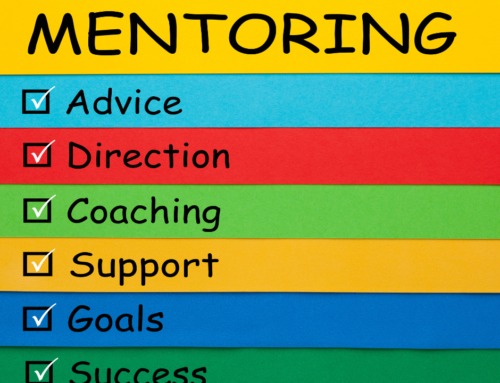How To Build Morale Sky High in Your Workplace Part One
I often write about looking at the different ways organizations can improve workplace morale. Sometimes from a prescriptive nature, or this is what you should be doing and other times from the “proscriptive” or approach, or to say, “don’t be doing this!”.
The fact remains that not a single person benefits from chronically low morale in the workplace. And it also costs organizations massively in terms of setbacks and their bottom line.
In the next two articles, I want to revisit and summarize some of the key elements to keeping your morale soaring at work, using both the “do this” and “don’t do that” approach.
Here we go.
1. Encourage Respectable and Cordial Environments
Civility in the workplace has many benefits. Immediately obvious ones include a greater sense of job satisfaction and an increase in employee morale. When a workplace has a well-defined code of conduct that encourages and requires civility of its management and employees, co-workers will often be more collaborative and respectful. Workplaces that adhere to a code of conduct promoting civility to experience less absenteeism and turnover.
Civility is about people using their manners, being courteous and polite. It is about people being generally aware of the rights, concerns, and feelings of others. Organizations have the responsibility to develop a code of conduct. It should encourage civil behavior among all employees. A lack of civility in any workplace should always be prevented and never tolerated.
Do your part to ensure your workplace is a respectable and a cordial environment for your employees to thrive within.
2. No to Dark Humour
Unfortunately, this type of cynical humor can take root and start to proliferate within an organization. If left to its devices, it can spread like wildfire. Two of the more severe consequences, when dark humor becomes normalized, are diminished motivation among employees and reduced team cohesion.
When co-workers laugh at the expense of someone’s dignity or worth, they are contributing to an unfriendly culture. Inevitably, this will take a dramatic toll on staff. Employees will be less inclined to selflessly help to the purpose of an organization’s success and well-being.
The more extended dark humor persists and is tolerated by management in any organization, the deeper its roots will grow. Organizations need to be vigilant. They need to not only discourage dark humor in the workplace but also stamp it out. And swiftly.
3. Empathy Builds Trust and Morale
It’s safe to conclude that some conflict in the workplace is inevitable. Our very individual perspectives and vulnerabilities (and those days when we are not at our best), engender the potential that something we do will make someone else unhappy. And, of course, the other way round: a colleague upsetting us.
Workplaces are especially delicate ecosystems.
One rogue moody person’s behavior can have trickle-down consequences throughout a team’s general attitude throughout the day.
And this is likely to spill into the next day. Perhaps into the future. Let’s face it, it does not take much for morale to nosedive when negative, positional stances become the norm between colleagues.
A workplace that invests in building employee social capital are workplaces that benefit from the very empathy socialization creates. We listen better to people we know well. We are more inclined to put ourselves in their shoes when we have regularly taken the time to socialize and converse with them.
4. Zero Tolerance for Bullying and Harassment
Although there are many variations on what constitutes workplace bullying and harassment, it invariably includes verbal comments intended to hurt, demean, and inflict mental distress on a co-worker in the workplace.
Bullying and harassment include acts of physical aggression. Some can be subtle, though by no means any less threatening, than actual physical violence. Inevitably, unpleasant and toxic work environments are born out of such employee relations.
So what to do? Bullying and harassment is not always the easiest thing to detect nor address, and the only way to prepare correctly to deal with this type of employee conduct effectively is to have pre-existing awareness and procedures in place.
You Need a Workplace Bullying Policy
Develop and articulate a zero-tolerance workplace bullying policy. The policy must outline in precise, clear terms your organization’s view on bullying and harassment and its commitment to enforcing a zero-tolerance approach. Define what you mean by workplace bullying (or harassment or violence) in precise, concrete language.
4. Follow-up Is Imperative
Organizations that have a standardized approach to following up are proactive. Chances are they have teams whose performance is efficient, whose understanding of expectations is clear, and who reap the benefits of healthy workplace culture.
Far from micromanaging or evidence of managerial mistrust, following up regularly with employees is progressive, and should be regarded as an essential aspect of internal communications strategies.
Effective Follow Up Strategies
An effective follow-up strategy ensures an organization’s expectations are clear and well understood. Whether following a departmental meeting or the implementation of new workplace policies follow up is a necessity. Be sure to offer proper follow up of disciplinary action.
A thorough follow-up minimizes the chances of misinterpretation. It sends the message that management is serious about implementing its policies and procedures. When you maximize your communication efforts with staff, you minimize the chances for guesswork down the road. Unclear or poorly communicated procedures are often a result of little to no following up.
A follow-up is about emphasizing the importance of tasks and allowing an organization to have a handle on expectations and long-term goals. It’s about cohesiveness and driving the same messages home to everyone involved by making sure nobody is misunderstanding expectations.
Morale Building Takes Effort
High, optimal morale in any workplace is the result of many moving parts that have found a way to align and serve each other. It is by no means an easy thing to achieve.
The second part two of this article will continue to look at ways organizations can facilitate workers experiencing highly positive interactions with their peers and managers. See you next week.






